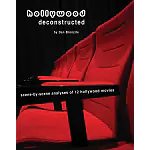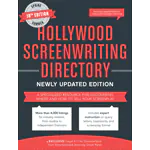Tag: script writing
Script Studio® Launches Annual International Feature Screenwriting Contest
December 15, 2021 (London, UK) – UK technology company Nuvotech has launched its inaugural Script Studio® 2022 Feature Screenwriting Contest in the hope of discovering new international screenwriting talent.…
Nuvotech Releases New Reference Plugins For Movie Outline 3
4 December, 2012 (London, UK) — UK technology company Nuvotech today launched six new Reference Plugins Movie Breakdowns for its popular screenwriting software Movie Outline 3. Hollywood Hits Plugins…
Creating Effective Scene Transitions
Sometimes as writers we get so caught up with developing the crucial elements of a screenplay such as character arcs, plot logic, theme, structure and snappy dialogue that we…
Structure Vs Free-Form Script Writing
Screenwriters, novice and pro, will inevitably have their own contrasting methodologies for writing a screenplay and you will often hear conflicting rules to adhere to from prominent screenwriting gurus…
Movie Outline Gets Thumbs Up From HubPages Review
Ladies and Gentlemen, fellow hubbers, I’m proud to admit that I’ve just finished my first screenplay. My third, actually, but with the others I gave up at around page…
Create Complex Characters that are not Black and White in Nature
How often in life do you meet someone that is flawless? Conversely, how often do you meet someone that does not have a single good bone in their body? …
Vary your Movie Script Locations
In your everyday life, do you sit in one spot and talk to everybody you meet in that same place? Okay, maybe you do but unless that’s the point…
Conflict is the Key to Writing a Good Story
Nothing in life is easy, so why should “movie life” be any different? Whether you are writing a drama based on true life events or a science fiction movie…
Nuvotech Invites People to Unlock Their Imaginations with Script It! Creative Writing Software
February 11, 2011 (London, UK) -- UK technology company Nuvotech, known for its professional screenwriting software Movie Outline® and innovative cloud service for script reading and coverage Hollywood Script Express,…



